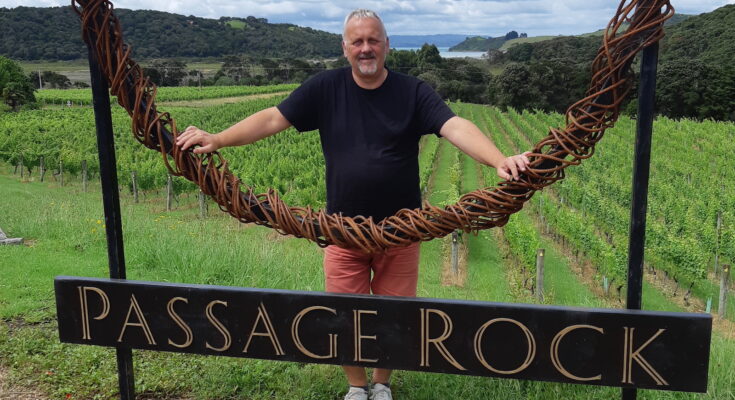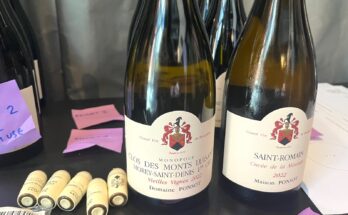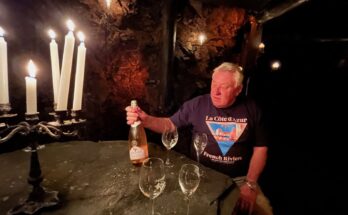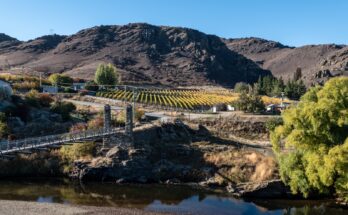It is my first trip to Waiheke in a while, and with Gabor as chaperone, I’m unlocking the doors to a few of the ‘big guns’ on the island – as well as few smaller operators. Today it is time for one of the former – sitting down to what evolved into a rather epic tasting session with one of the pioneers, and owner of ‘Waiheke’s most-awarded winery’ – David Evans of Passage Rock.
WineFolio: Good to see the restaurant open and buzzing again. Time to recoup some money, after all these months of Waiheke being off limits!
David Evans: Yes, well it has been an expensive year. Did you have the Sauvignon Blanc when you got here? Because people don’t normally like Sauvignon Blanc you know – and that’s super tropical.
WF: We did, and it was lovely. I have a lot of time for good Sauvignon Blanc. Done well, I think it is a super wine. It was beautifully aromatic and had the gooseberry type flavours you associate with it without any harshness. Much more elegance and likeability, to me.
This is a lovely spot. Did you come here because this is where you wanted to be, or because you knew this would be good for what you wanted to do?
DE: Hmm, well both really. We were looking for a perfect vineyard spot, and we thought we’d have a lifestyle block with cows, horses and that. So, we found this on the second day. We saw an advert in the Herald for 41 acres.
WF: On the second day of looking? People look for the great vineyard site for five years!?
DE: Actually the second day we came into New Zealand! We’d been living in Switzerland and thought we’d come and have a look. I’d been on a previous trip and gone to Martinborough and looked at things. This time Veronika came with me, and we found this block. 41 acres for $120,000 or something like that. And it was a bare block, but beautiful. The drive was all gravel road and that, but when you get here… this is all a huge forest and bird reserve behind us, covenanted bush and a marine reserve out there. We’re surrounded by nature and the land is very giving. Whatever we put in, it just gives back in abundance. I’ve just moved back into the house here and I’m in love with it again. It is a lovely journey to come back.
The Sauvignon Blanc is a lovely wine. You get people in the Tasting Room and they say ‘oh I hate Sauvignon Blanc’. Even a Chardonnay lover is going to drink that Sauvignon Blanc because it has got a little bit of barrel influence. Two barrels out of twelve. Much lower acid, and super ripe. It is a little high on the alcohol side at 14.5%. It shot away on us. We do a lot of leaf plucking – in Marlborough they don’t, as they want the grassiness. We do, and our berries are golden yellow and taste amazing when it comes in the winery.
With the Viognier – which you’ve got now – we have changed the style up a bit. I tightened it up a little bit because I found that it was just a bit too fat, and some of the aromatics were getting a bit lost in that. I know that people want the same thing all the time, but it does also depend on how the season comes. This was very ripe, but it is not as low acid as other years. I like both. We used to do malo but now we don’t in the Viognier.
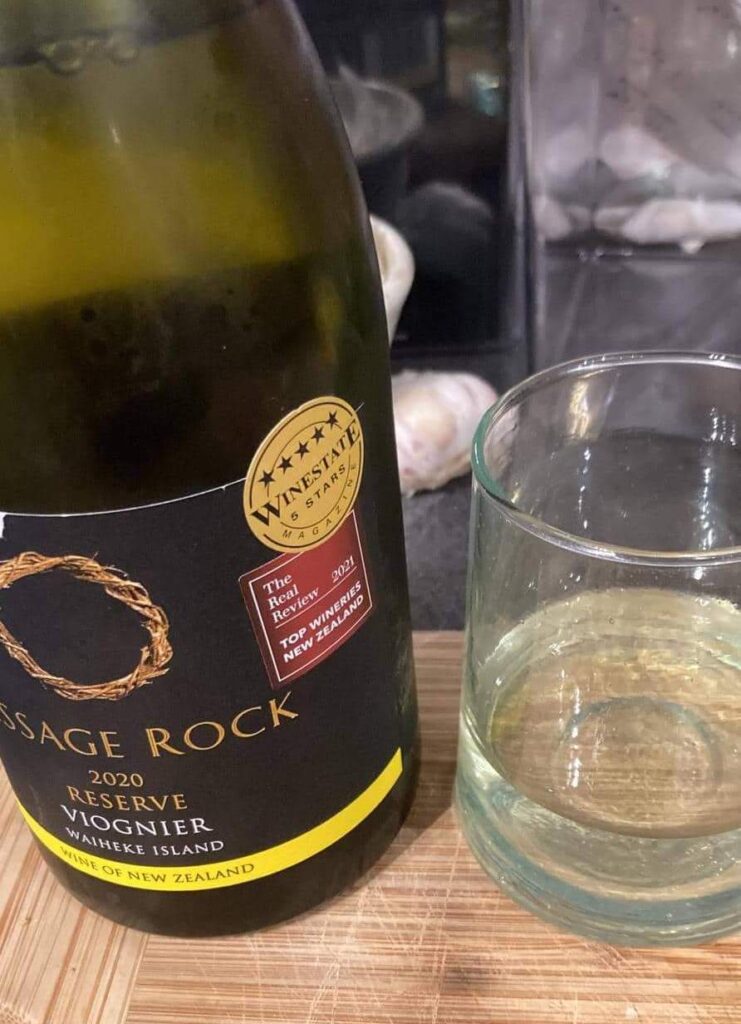
I’ll bring out three Chardonnays and see what you think and compare?
WF: I like to see a range of wines, and how they evolve – I’m into ideas. And stories.
We’re poured a taster of three Chardonnays – the ’18 and the two ‘19s.
DE: With the Chardonnay, we used to do a blend of cultured yeast and wild ferments. I love the wild ferment character but I also find that sometimes it is a bit much.
It can be intense. I used to do a portion of each, and in the ’18 there is about 50/50. And I started to find that we lost the clarity with that. You’ve got the sulphides from the full-solid wild ferment, and then a cultured settled-juice clarity. The ’18 was the end of the blending of the two – in ’19 we separated the two out.
The ’18 was a slightly challenging year as we had a bit of rain, and we picked it not long after that. I think the mixture of the two gives it a little bit of a muddled palate. I think it is a beautiful wine and I enjoy drinking it, but it is quite complex. It is one of those wines that you think ‘I want a really interesting Chardonnay’. It is nice and soft on the palate because it went through malo. We’re minimal handling, but we do give it a good lees stirring and put it to bed; then bottle it in February. It is interesting how each wine develops, and now we’re trying to make sure it doesn’t go through malo, so we keep it intact and not lose the acidity.
We try and pick it riper, so more like 23 brix, and with acid getting down to six. Some of the other guys on the island, they pick it less ripe – like 21 brix, and then they go through 100% malo. They’re looking for that softening through malolactic, and we’re looking for softening through super ripeness. That’s our policy on Chardonnay. If we move to the ’19 Reserve now, you’ve got that lovely citrusy, peachy nose and a bit of weight in the palate. I know people love the stinky style of the wild ferment, but a lot of people will love the clarity and purity in this.
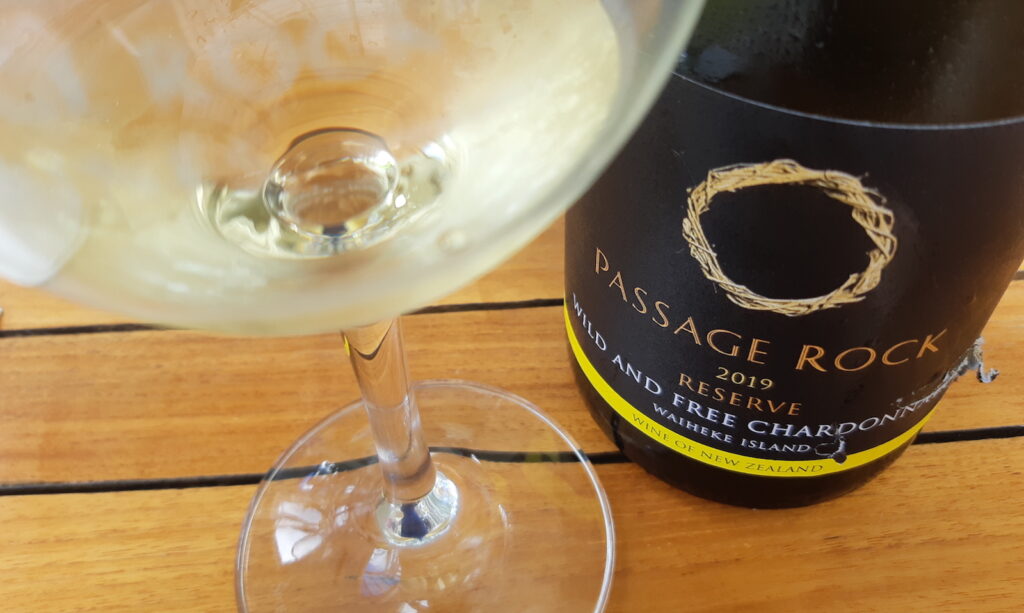
WF: Without going too broad, that has quite a playful personality. Cool how it’s like that but still fairly tight, pure and linear.
We’re joined by Steve from Awaroa vineyard, who happens upon our table, laden with glasses!
DE: Wild and Free is the same grapes, just free run juice. We just put the grapes in the top of the press, let the juice run through, pump that into the barrel and off you go. It’s all over in about four days! We refrigerate the Reserve and chill that so that it will settle – take the clear juice off.
WF: It is quite funky and flamboyant. I’m not sure if I could drink a whole bottle of that though. Sometimes the sum of the parts is greater, but I can see that’s not quite happening here, and for you.
DE: Exactly, and that’s where I’d got to, and I’m carrying that on, which is quite fun. That’s our evolution in the last few years. Let’s also have a look at Syrah?
WF: Well, honestly, that is what put you on the map isn’t it? It has won a lot of awards.
DE: The Estate is what I tend to think of as our every day Syrah. We’ve got three sites for Syrah, and even within this property we’ve got a range of topography and ripeness and so on. Our other sites are by Oneroa, near the ferry on Kura Road – the Fenton block – next to where the old Peninsula Estate used to be.
WF: I love the aromatics on the ’19. So much floral, it just leaps out of the glass. And quite a bit of pepper and mocha character in there too.
DE: This is our interpretation of Syrah. In Hawke’s Bay they go quite acidic. They’re quite tight, lean wines. Not all of them of course. Our ’19 had quite a bit of tension in it originally.
WF: Well this 2020 is very ripe, generous, and lovely balance. And the colour – it is luminous ruby! It’s Reserve quality. The ’19 is more savoury, but this ’20 is so ripe and fruit-forward.
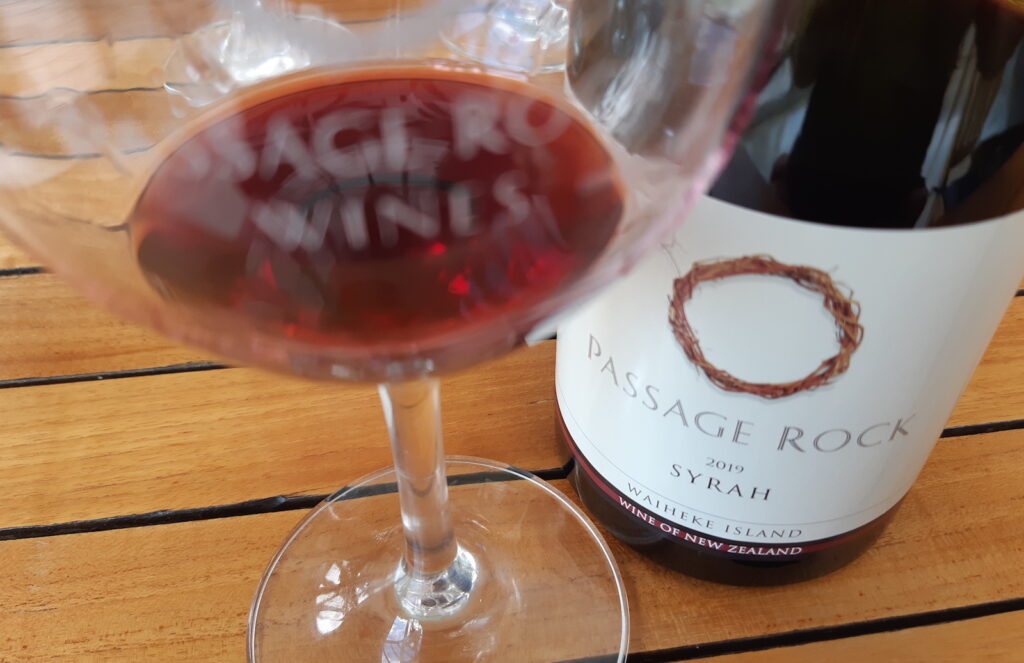
DE: That was the problem with ’20 really. There was too much good stuff. Those aren’t our hugest wines, but as an introduction to Syrah you can see the focus, the consistency and the aromatics. We do have a lot of plots for Syrah, so we can choose the better batches for the Reserve. Although we basically make the Reserve and the white label the same, and then we choose out the barrels for the Reserve. We do a cold soak and try to hold it as long as we can before the ferment takes place, and when that kicks in, and we’re confident we can’t hold it back any more, then we’ll inoculate with our yeast. We try and get our ferments as hot as possible, with three times a day plunging or pump-overs. The fermentation probably takes about twenty days from beginning to end.
Our crusher is very gentle, so we’re not macerating the crap out of it. With the reserve, I’m looking for next-level ripeness, taking it up a notch in the fruit. Denser colour and concentration. For aromatics, sometimes the white label can be more impressive.
WF: The oak is interesting – spicy – as well – is it something a bit different?
DE: They’re made in Portugal, from French oak – Concavés. They’ll get whatever forest you want but they are a couple of hundred dollars cheaper per barrel. Still bloody expensive. I like medium plus toast, it gives a nice richness to it.
WF: 2020 must have brought a few extra challenges?
DE: I was a bit worried at harvest time, because it was made out that you couldn’t drive across the island, or leave your home. We had some clients who we make wine for, and they wanted to hand pick because they couldn’t organise pickers. So we had our bubbles and ended up working with small teams and managed quite well. It was actually a beautiful harvest. Very controlled – every day we’d pick four or five tonnes. We had to pick alternate rows as you couldn’t get close to each other – unless you were in the same bubble. You drove alternate tractors, and we only drove the forklift – all these safety precautions.
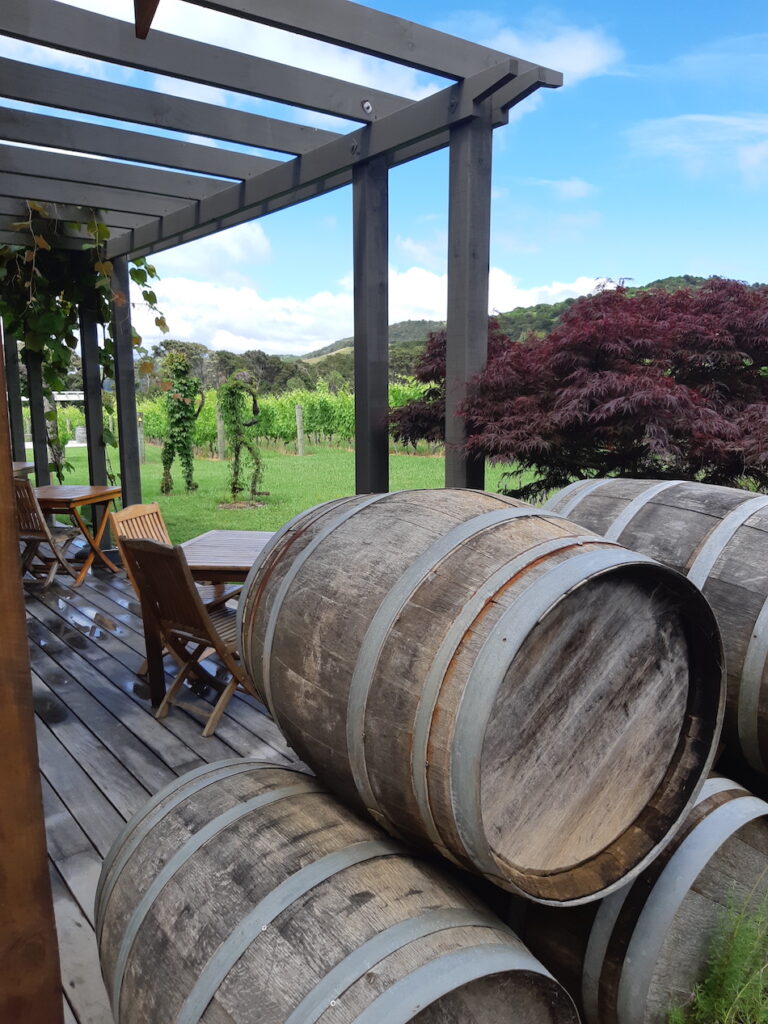
Let’s have a look at Cabernet. The right hand glass is Reserve Cabernet Merlot, but it’s not got much Merlot in it – maybe 8%. If you look at growing degree days on Waiheke, it’s not far off the Barossa – probably because the night time temperatures are so high. We sit way above the Coonawarra – and Hawke’s Bay as well. Margaret River is probably the closest if you look at the numbers. We don’t use irrigation – it is all naturally grown grapes.
WF: The ’20 has a real fruit plushness to it. Still with that tight structure and definite tannins, but so much ripe fruit.
DE: I’m really happy with that ’20. It was a beast – quite tannic. I thought you’d never be able to drink it to be honest, and almost downgraded it. You’d have to wait at least five years, but it’s actually already come around and is tasting bloody good.
In the right hand glass is the Generation – our Super Cabernet. So we’ve gone ‘OK this is an exceptional year’ and chose five barrels for this wine. we think it was perfect grapes, really pure Cabernet aroma, and great intensity. We’ve pitched it at the same price as Stonyridge, at $175 a bottle. It was Jonny’s first harvest, so it was like a handing-over. I said “I don’t care if it takes a generation to sell it!” But actually it sells really well!
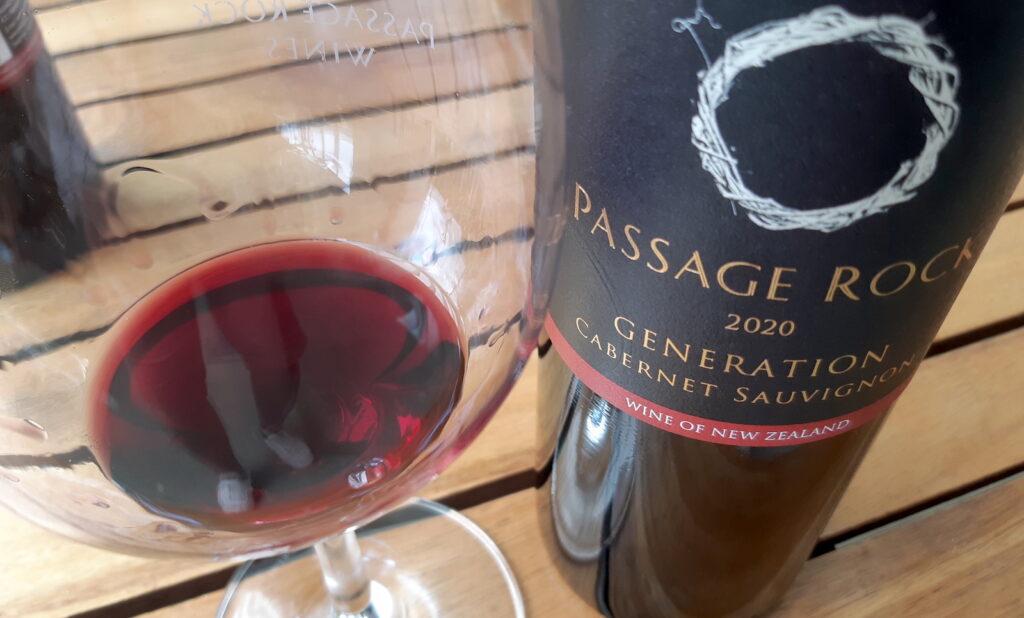
WF: It’s got wonderful oak, so you must have used some nice barrels?
DE: Yes, it was some really nice barrels. We started with 500 litre puncheons, but they had TBA, so we got sent replacements for the 2020 harvest. They were barriques and they were bloody nice. so what do you think of the Generation?
WF: I’m getting beautiful fruit, and the oak is just magnificent. It’s got a real swagger. A really confident, chest pumped-out kind of Cabernet. I like that it has that typicity. When you’ve had really good Cabernet Sauvignon, you know that.. they have a certain character – and this has that. That’s something a bit special.
DE: You’re the first press we’ve shown that to.
WF: I’m still waiting to write my article that I do at the end of the year – the “Wines of the Year”. I thought I’d better wait until I’ve been to Waiheke! It has to be something that has really stood out to me over the year. It can be anything. One year, I included an Esk Valley Pinot Gris that sold for $14.99. Usually there are a couple of wines in a year that just stop you in your tracks. I imagine the Kumeu River Mates Chardonnay that got 100 points from James Suckling will be in there. It’s probably my favourite wine, and I was lucky enough to grab a 3 litre bottle just before it all sold out – when it got that big score, and then Suckling made it his Wine of the Year – which is a pretty big deal for a New Zealand wine to be honest.
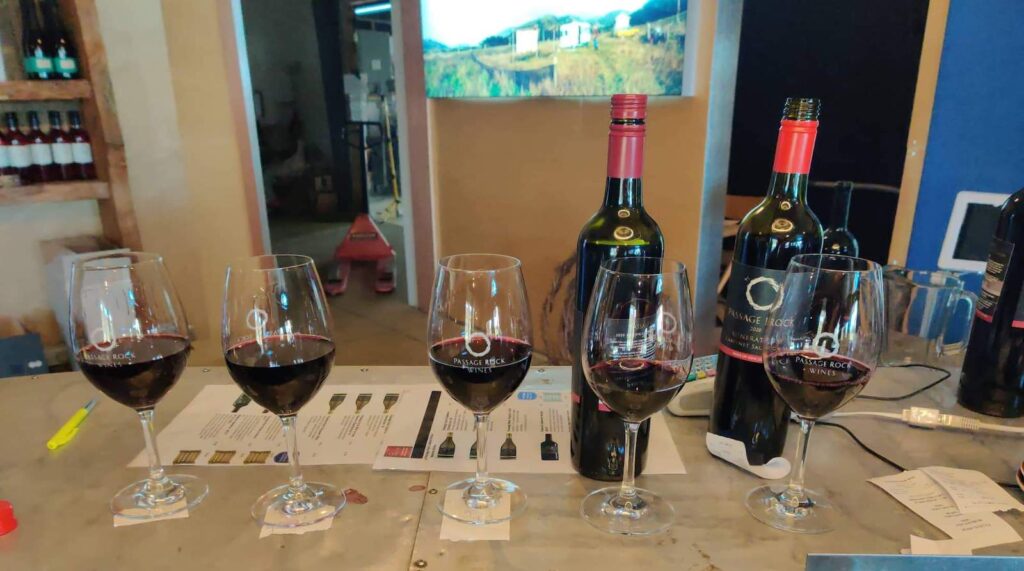
DE: Right, one last wine. The last one – I promise! This is our Magnus – our ‘Neuf du Pape’. We have five varieties in there. We wanted to make a really complex, rich, beautiful blend. We put the Italian variety in there because it adds some mongrel, which is essential – I think.
WF: A lovely savoury herbal element to this as well. The 2015 is superb – great length to it, but, again, the younger wine has real potential – could turn out to be the better wine in the long run – the 2019.
DE: A lovely complexity, and weight. It’s not chunky it’s just got amazing elegance and length. I think that 2015 is a beautiful wine right now. We do have some great wines in the cellar right now.

